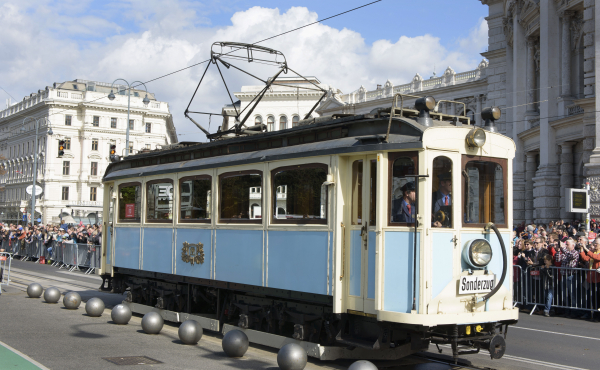 today 134
today 134
Be it the tram in the classical sense or the suburban railways that combine features of underground railways and trams, the future of urban transport is on the rail. While the construction and running of underground systems incur a huge cost, tram systems can be constructed and integrated into the cityscape at a comparatively low cost.

Guest article
Head of the Institute for Transport Science, Vienna University of Technology
Due to the increasing importance of these transport systems, Vienna Technical University has set up a project team together with Plasser & Theurer and the Vienna public transport company Wiener Linien. The project aims, as a part of the Shift2Rail research initiative, to examine the global market position of the tram system and to work out challenges and approaches for the successful development of these systems in future.
When looking at the market development over the last years, one notices that emerging economies such as Turkey or China are at the forefront of the construction of such systems. But a shift from private transport to public transport can also be seen in US cities – once the tram strongholds. Since the turn of the millennium, 17 new tram and suburban rail systems have been opened there.
In view of this rapid development it is of vital importance to keep an eye on the growing requirements with regard to the environment and the quality of urban spaces. Noise and vibration emissions in particular, which receive increasing attention from public authorities, not least because of a multitude of scientific evidence on their harmful effects on human health, pose a great challenge for the operating companies of urban rail networks.
A survey carried out as part of the research project among network operators from all over the world shows that this type of emission is an ongoing issue for the majority of operators. The response to complaints and exceeding legal limits can often only be operational restrictions or maintenance measures. With ever increasing demands from the legislator – through the Environmental Noise Directive EU member states are obliged to systematically draw up noise maps and plans for reducing noise exposure – operating companies have no choice but to become active and find ways to keep emissions below specified limits.
For the vibration stimulation between wheel and rail the interaction of rail and wheel roughness is a decisive factor. The wheel roughness can be managed fairly well by regularly turning the tyres, but the rail, too, requires regular maintenance. The most important measure is rail grinding. So far this has been done on a mostly reactive basis, to rectify existing damage or profile errors on rails. Due to the peculiarities of urban rail networks there are simply no effective technologies available for pre-emptive, acoustic rail grinding at this point in time. This is being worked on, also within Shift2Rail. The future is in urban rail networks, but only if they are properly maintained.

Towards the end of the 19th century the tram was the first suitable means of mass transport in the cramped, growing structures of cities. Electrically driven to transport large numbers of passengers, it provided an economic boost to large cities all over the world and the possibility for cities to expand and still be easily accessible. But the triumph of the next generation means of transport was not long in the coming – the automobile as a private means of transport and as the achievement of the 20th century increasingly pushed the tram out of the cities. In Buenos Aires, the “City of Trams” with the once longest tram network in the world covering 875 km, the last tram made its journey in 1963. In the USA the tram networks were even bought up by General Motors and systematically closed down to make room for the car.
But even the “car-friendly city”, the ideal for town planners in the 1950s based on the euphoria around the car, soon showed its weaknesses. City centres that had been vacated generated insecurity and a feeling of discomfort. The paradigms of town planning started to change, people and their living spaces were put at the forefront again. The solution for these problems was once again the tram – in various manifestations.
Images: © Wiener Linien/Johannes Zinner